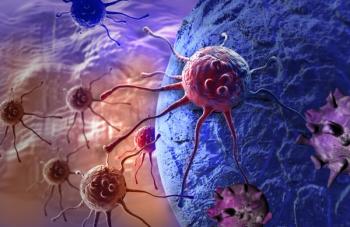
ONS: Implementing a Comprehensive Infection-Prevention Plan
Nurses from a New Jersey cancer center have adapted several key plans from the CDC, ONS, and other societies to create a comprehensive infection-control plan.
At the 38th annual Oncology Nursing Society (ONS) Congress, a team of nurses from a community cancer center in New Jersey presented a poster (98056) highlighting how they adapted several key infection-control plans, from the Centers for Disease Control and Prevention (CDC), the Oncology Nursing Society, and other professional societies, to create comprehensive plan of patient and staff education, infection-prevention documentation and monitoring, and community outreach for promotion of infection-prevention strategies relevant to the outpatient community oncology setting.
The lead author of the study is Michele Gaguski, MSN, RN, AOCN, CHPN, APN-C, from Atlanticare Cancer Care Institute, Egg Harbor, New Jersey. Her colleagues are Karen Brady, RN, OCN, Josie Ellis, RN, BSN, OCN, Frances Goldberg, RN, OCN, and Vicki Nicolicchia, RN, OCN.
The need for an outpatient focused infection-prevention strategy is clear, Ms. Gaguski and her colleagues said, given the shift in recent years to outpatient treatment of cancer, coupled with individual patient risk factors such as certain comorbidities, immunosuppression resulting from the malignancy and its treatment, and the greater frequency of cancer patients’ contact with healthcare settings, increasing their risk of exposure to other patients with infections.
The investigators described their work as a “performance-improvement project,” with recommendations incorporated into practices and outcomes monitored and measured. It involved staff nurses, the clinical nursing director, and the infection control nurse at the health system. To inform their infection-prevention plan, the investigators adapted the CDC’s Basic Infection Control and Prevention Plan for Outpatient Oncology Settings; this Plan is based on CDC’s own evidence-based guidelines and those from ONS and other professional societies. ONS’s Putting Evidence into Practice (PEP) information on infection also was reviewed, as well as key information from the CDC’s 3 Steps website (www.preventcancerinfections.org) These guidelines were integrated into practice in a wide variety of ways, the authors wrote: through collaboration with the health system’s infection-control committee, annual infection-control education for all medical oncology staff; analysis and refinement of the center’s infection-control policy as needed; participation by infection-control and oncology nursing staff in the CDC’s research study, “Evaluation of the PreventCancerInfections.org Website”; and integration of best practices into clinical documentation related to infection and its management at their institution.
Patient and community outreach as part of the project included development of a brochure for patient education, called “What to Do to Prevent an Infection During Treatment for Cancer”; posting information in the patient waiting area about infection control and prevention; and conducting two educational community programs called “Prevention of Infection During Cancer Treatment,” in collaboration with the Gilda’s Club of South Jersey.
Every month, the team monitored the overall cleanliness of the patient care areas of the facility; assessed nursing documentation of infection prevention, using the previously mentioned online resources of the CDC; made follow-up phone calls so that patients could verify that they had received infection-control education from their nurses upon discharge; and evaluated the impact of the community outreach programs conducted through Gilda’s Club.
In their presentation at ONS, Ms. Gaguski and colleagues reported 40% improvement from baseline in consistent infection-prevention documentation by oncology nurses using the web-based educational materials developed by the CDC; 50% improvement of self-reporting by patients, confirming that they had received infection-control education from their oncology nurse upon discharge; 95% improvement in the aggregate cleanliness of the department, “as measured by using the product Glo-Germ to determine the presence of ‘uncleanliness’ within the department and on health care clinicians’ hands post hand-washing”; and successful implementation of the two educational community programs on infection.
In conclusion, the team noted that “[O]ncology nurses may apply the lessons learned from this project to their own work settings to continually improve patient care and safety within the arena of infection control.”
Newsletter
Stay up to date on recent advances in the multidisciplinary approach to cancer.





